Our know-how
Since ancient times, bronze has been molded using lost wax or sand casting. Bronzes de France perpetuates this expertise with its large collection of finely chiseled models in a variety of styles (Gothic, Renaissance, Louis XVI, etc.). These master models are used for reproduction: they enable the creation of a sand or silicone mold, which will receive the molten bronze. The cast piece is then removed from the mold and deburred, a step that removes excess material and surface burrs resulting from the casting process.
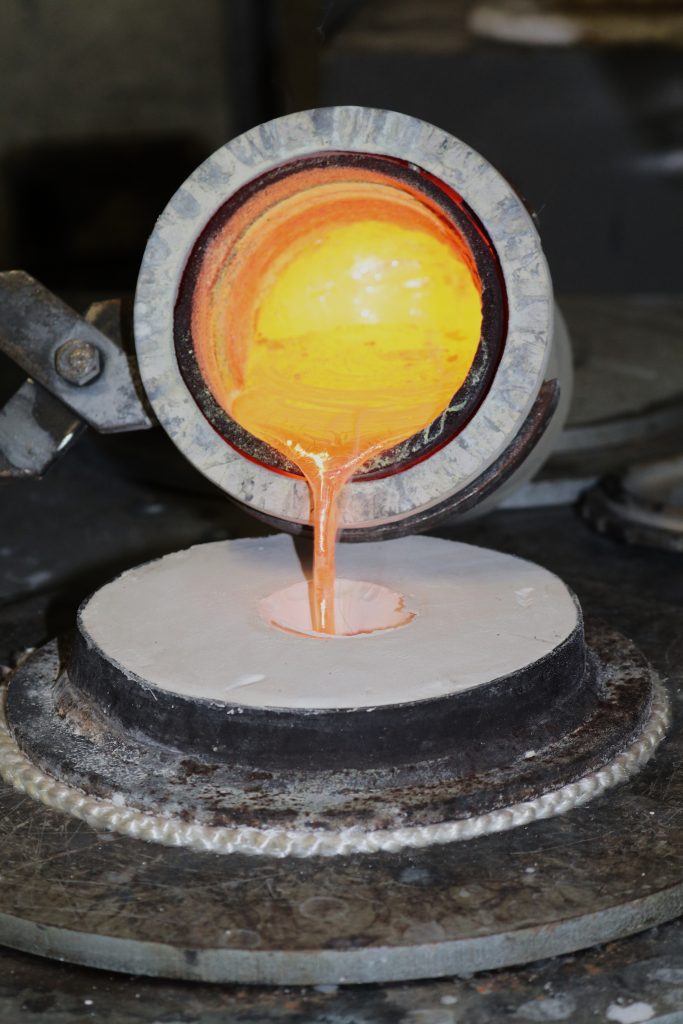
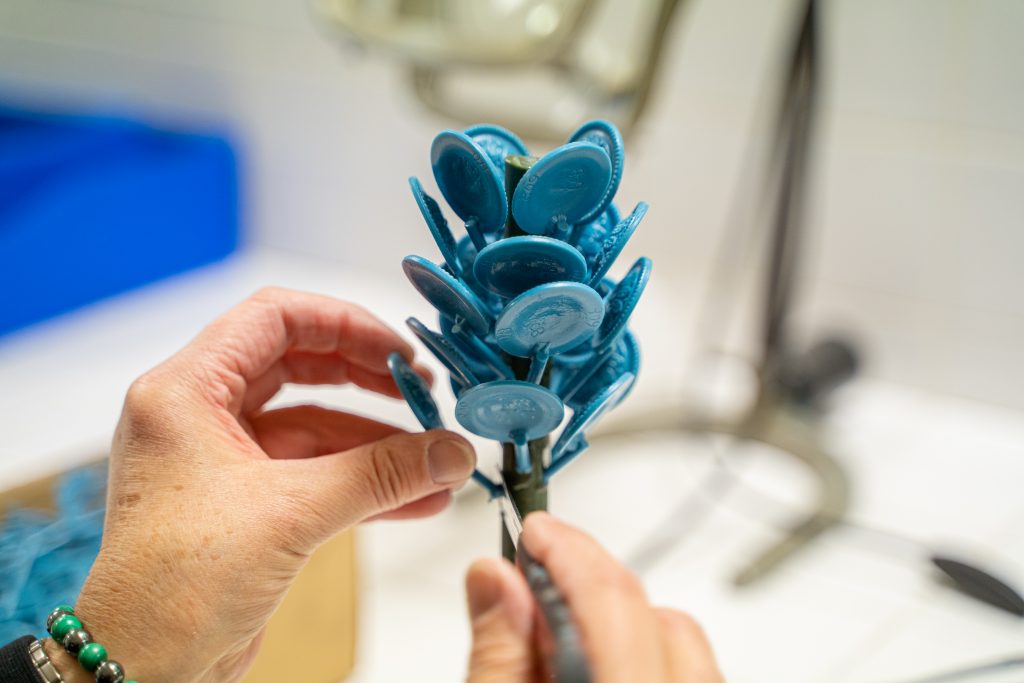
After casting comes the engraving stage, which allows the patterns on a piece to be traced and refined, or given a textured effect. Using chisels and a hammer, the chaser precisely redraws the ornamental patterns in relief or intaglio, such as arabesques, foliage, scrolls, shells, lion heads, etc., depending on the style (Louis XIV, Louis XV, Renaissance, etc.). This technique requires great precision and craftsmanship, as each piece is unique and made by hand.
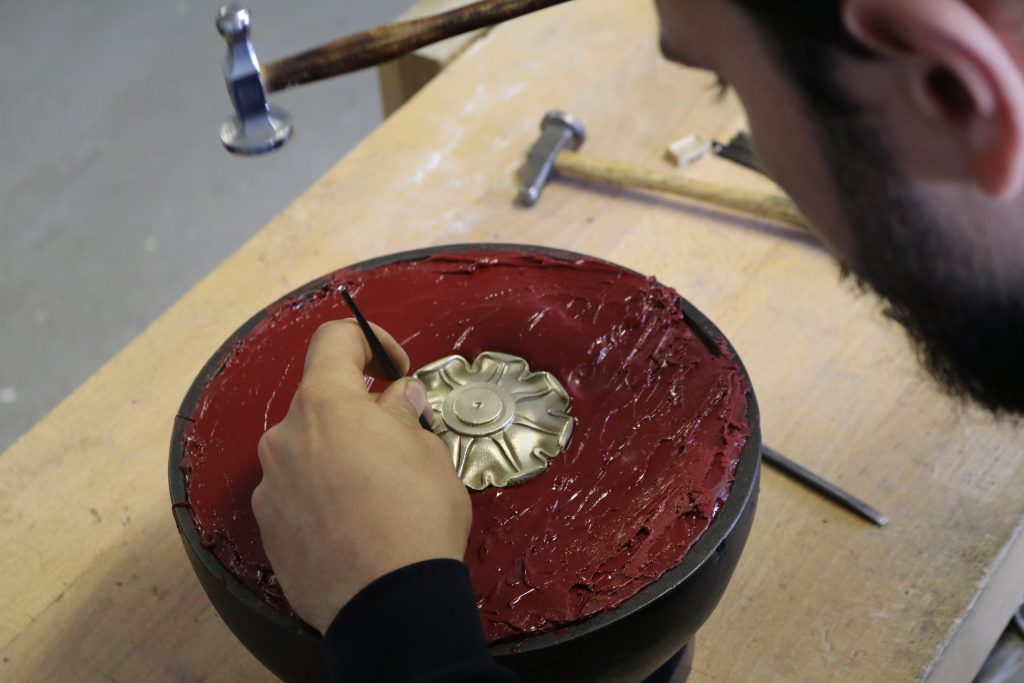
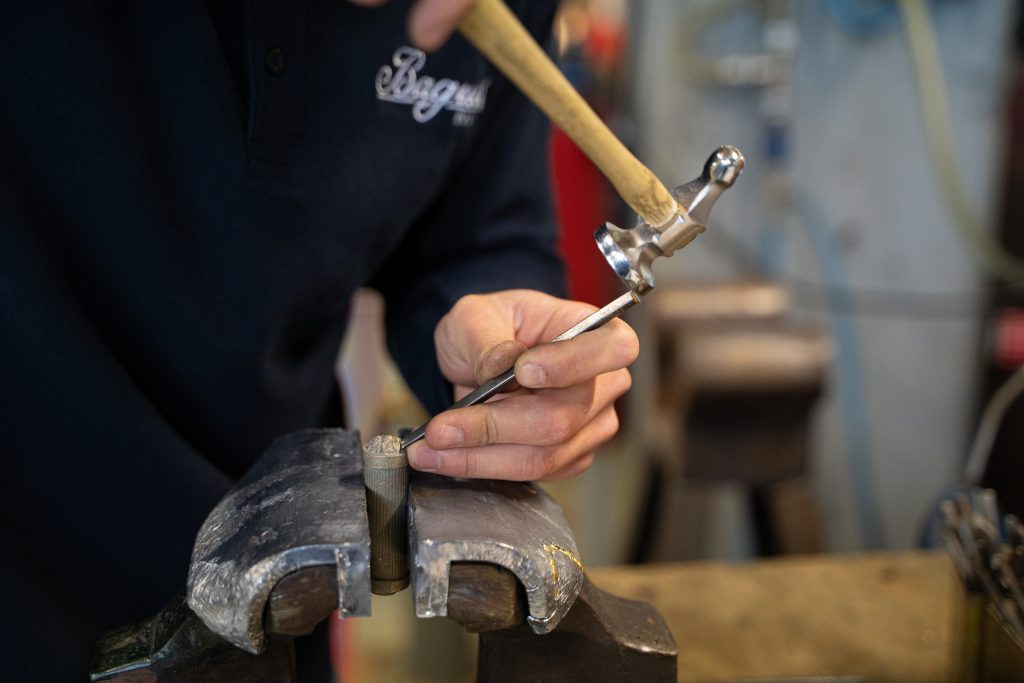
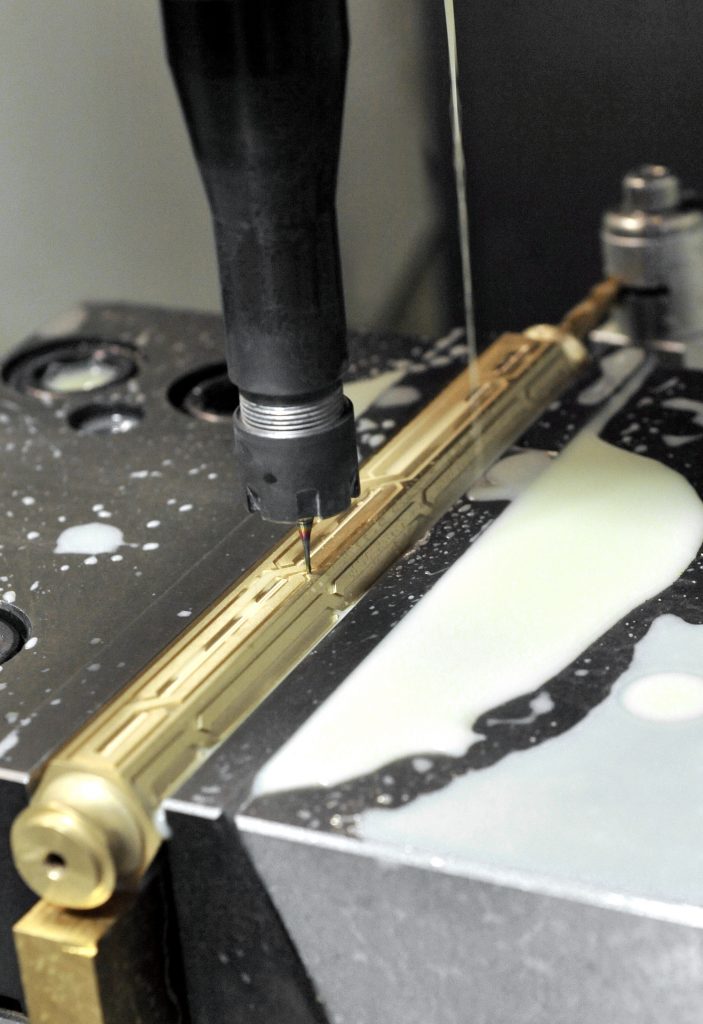
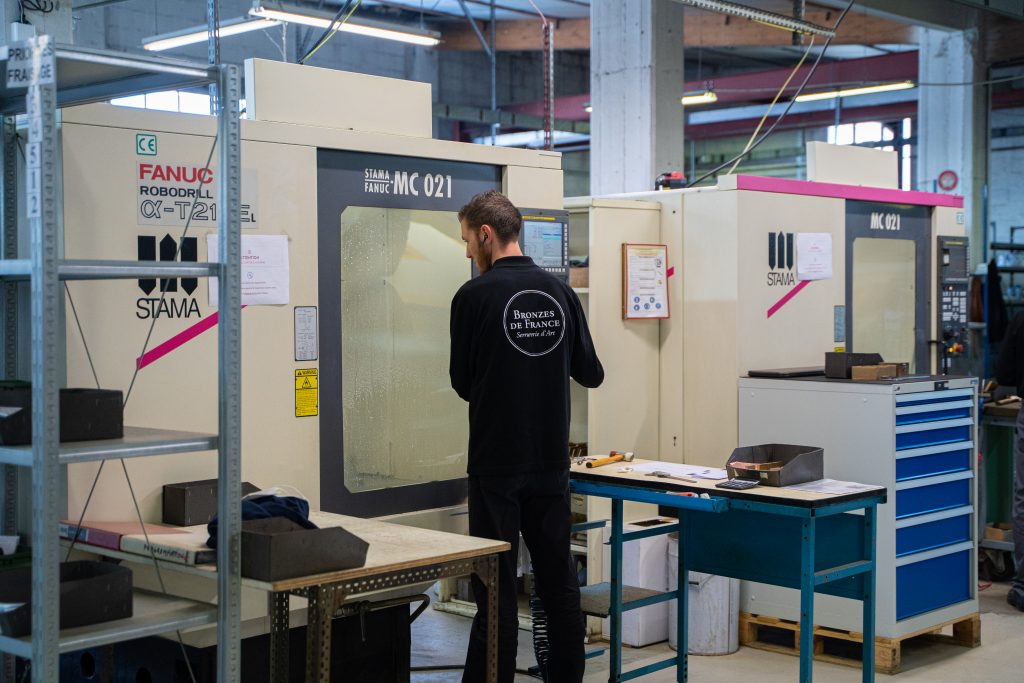
Not all parts can be processed using digital machines, and digital machines are not suitable for all tasks. More traditional machines and processes are therefore used, such as conventional lathes and milling machines, presses, drill presses, etc., allowing each part to be processed individually. The parts are then assembled for the first time, i.e., dry-assembled, to check the fit. Next comes the assembly stage, which involves several techniques: brazing, welding, force fitting, etc. Once the finish has been applied, the assembler must permanently reassemble the various components of the product before delivery.
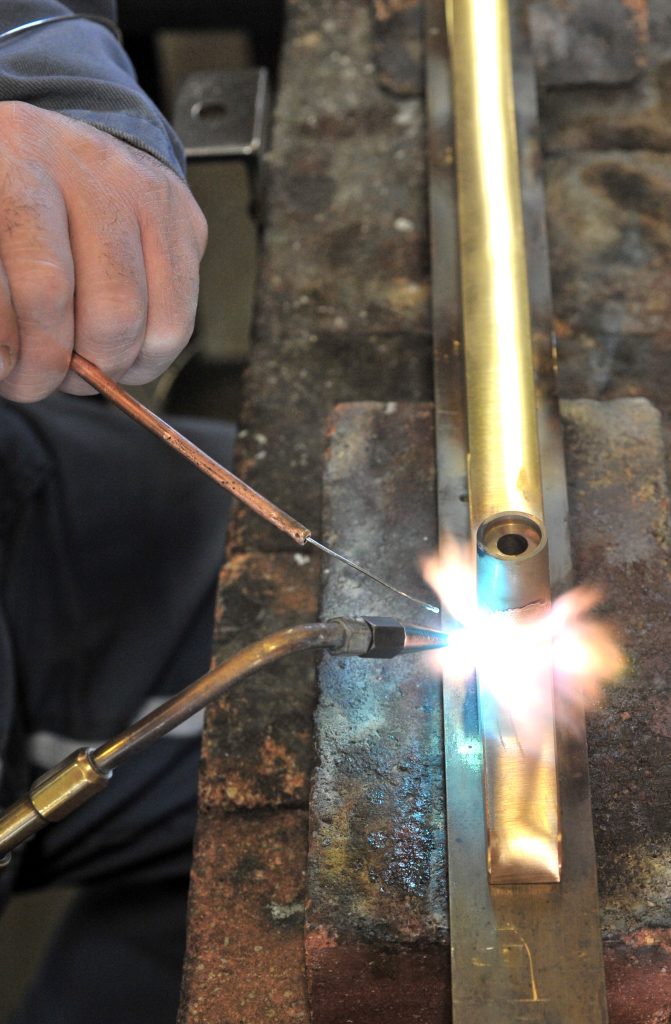
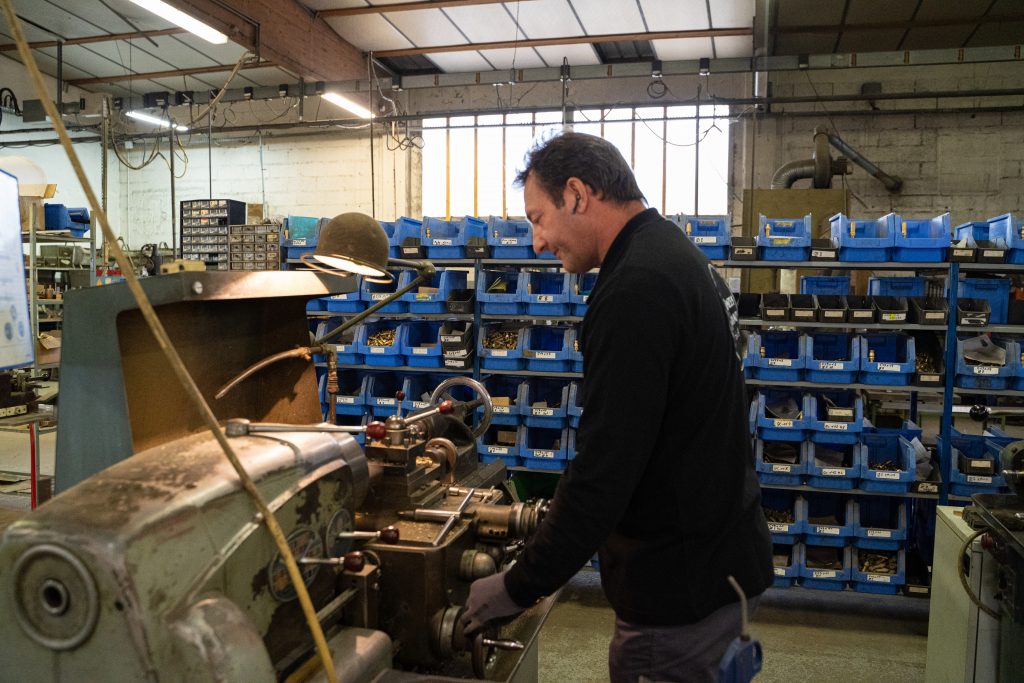
After chiseling or machining, the parts are sanded and then polished. Sanding is a pre-finishing operation that softens, smooths, and cleans the surface of brass or bronze using an abrasive called emery cloth. The surface is rubbed, starting with a coarse grain and progressing to finer grains. This removes machining marks and casting defects and prepares the surface for polishing.
Polishing is a finishing technique used to make the surface of a product smooth and flawless. Polishing discs are used to smooth the surface, and the final step, buffing, uses a paste to give a shiny finish. Polishing and buffing are most often performed on wheel polishers. This finish can be chosen for finished products, and is called mirror polish!
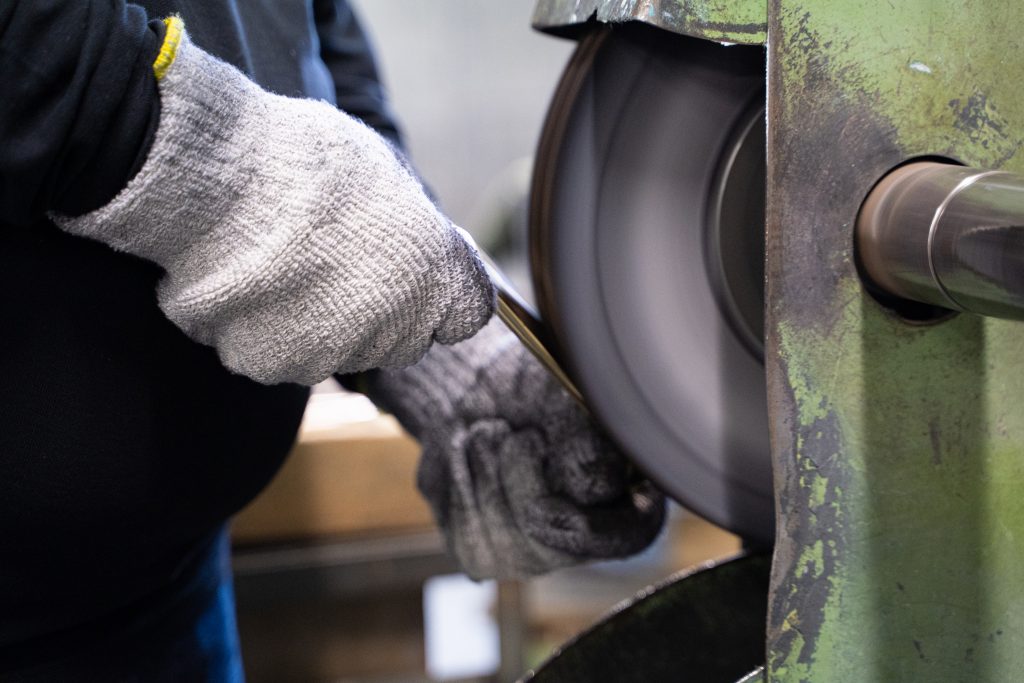
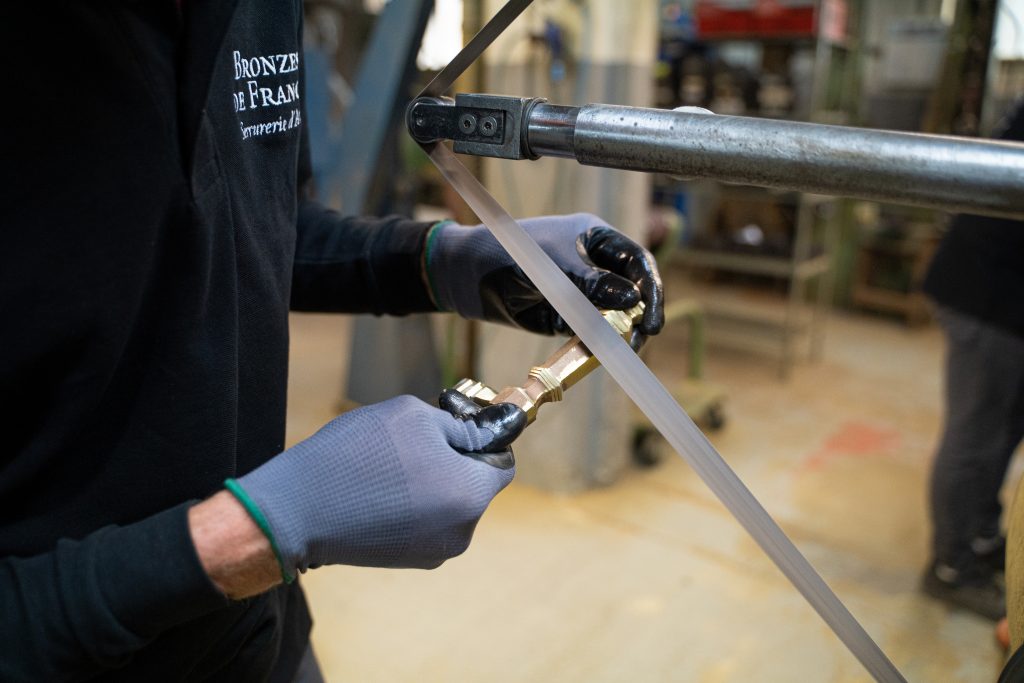
The pieces arrive at the finishing stage. Bronzes de France offers more than 30 finishes, ranging from mirror polish to chrome or gilding. The first step is degreasing, where the product is immersed in a bath of water to remove grease and impurities and bring it up to temperature. Next comes oxidation: the piece is oxidized in a bath, and the longer it stays there, the darker the patina will be. The third step is degradation, where the product is rubbed at different intensities to obtain a light, medium, or dark patina. Finally, a wax is applied to stabilize the oxidation and protect the patina.
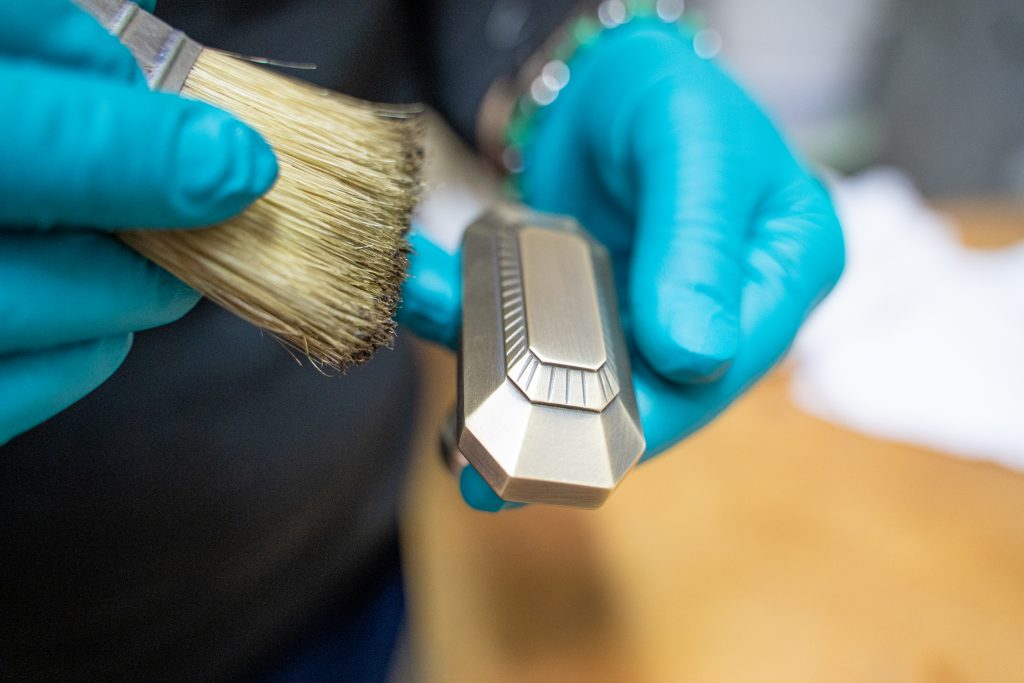
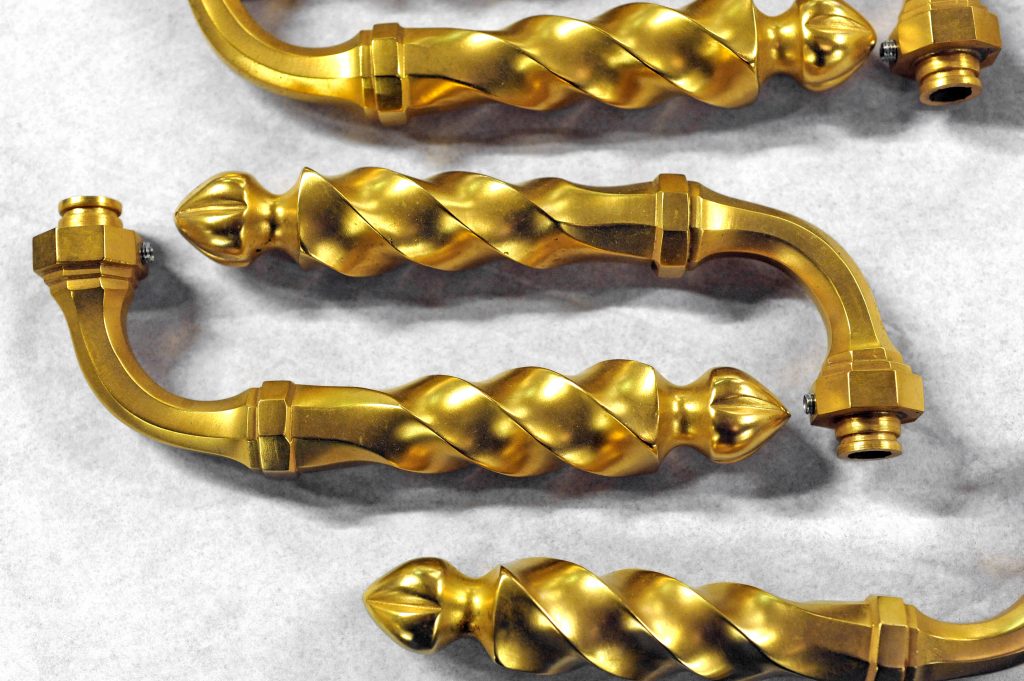
About
We use cookies to improve your experience on our site. By using our site, you consent to cookies.
Websites store cookies to enhance functionality and personalise your experience. You can manage your preferences, but blocking some cookies may impact site performance and services.
Les cookies essentiels permettent les fonctions de base et sont nécessaires au bon fonctionnement du site web.
You can find more information in our Terms & Conditions and Politique de confidentialité.